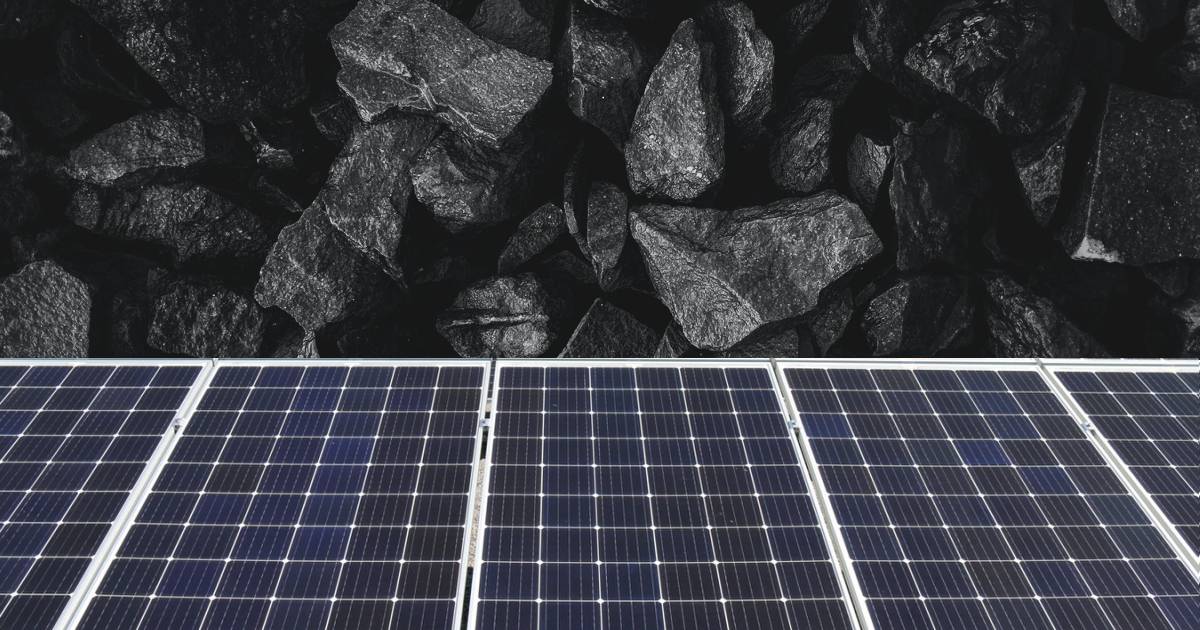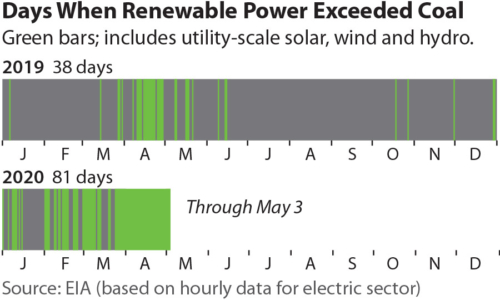
Renewable energy sources generated more electricity than coal power in the U.S. during April says the Institute for Energy Economics and Financial Analysis. Every. Single. Day.
The IEEFA bases its assessment on data released by the U.S. Energy Information Administration (EIA) and notes renewables beating coal actually began on March 25.

Image: IEEFA
“The transition away from coal for electricity generation has accelerated in 2020 due to a number of factors, particularly low gas prices, warmer weather, a significant amount of new renewable capacity connecting to the grid late last year, and more recently, lower power demand from the economic slowdown because of the coronavirus,” states the Institute.
IEEFA says preliminary figures from the EIA indicate coal’s market share for electricity generation was just 15.3% in April. IEEFA had previously forecast coal-fired electricity generation would be surpassed by renewables next year, but if the current trend continues that milestone could be seen this year.
Looking at last year, coal power accounted for an estimated 966 billion kilowatt-hours, 23.5% of the USA’s generation total; while renewables racked up 720 billion kilowatt hours1 (17.5%).
In January 2020, S & P Global Market Intelligence reported 13,703 MW of U.S. coal power capacity was retired last year – the highest level since 2015.
Here’s a relevant blast from the past:
“..we have ended the war on beautiful, clean coal.” – President Donald Trump, State Of The Union Address, January 30, 2018
It seems the President’s views on coal’s future in the USA have been about as accurate as many of his predictions for COVID-19.
Westpac Exiting Thermal Coal
In related news and closer to home, earlier this week Westpac committed to exiting thermal coal by 2030. According to MarketForces, Westpac had $370 million in exposure to coal power as at the end of September last year, the biggest of the four major banks. MarketForces said the decision was another nail in the coffin for thermal coal.
“This means anyone trying to operate a coal mine or power station in Australia beyond 2029 will find it increasingly difficult to access both debt and insurance.”
However, it noted loopholes remain – such as the potential to lend to new thermal coal mines until just before the exit date and to coal power stations if they slip through the cracks in its criteria.
Westpac’s Climate Change Position Statement and 2023 Action Plan states:
“Westpac recognises that climate change is one of the most significant issues that will impact the long-term prosperity of the global economy and our way of life. We are committed to managing our business in alignment with the Paris Agreement and the need to transition to a net zero emissions economy by 2050.”
As for its own energy use, Westpac committed to sourcing 100% of its electricity consumption from renewable sources by 2025 in April last year.
Footnotes
- Small-scale solar power’s contributions weren’t included in that figure, which added an extra 35 billion kWh. It should also be noted the IEA’s figures included biomass sources wood, biogenic and other waste; all controversial. These accounted for 48 billion kWh combined ↩

 RSS - Posts
RSS - Posts



Speak Your Mind